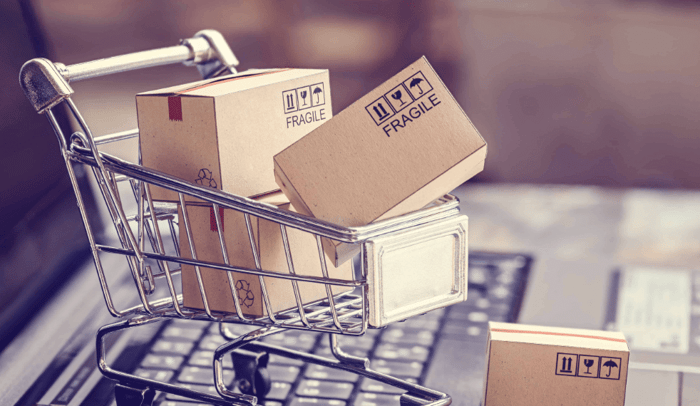Branding for Ecommerce: Strategies for Creating an Impactful Online Presence
Table of Contents
- What Is Ecommerce Branding and Why Does It Matter?
- Key Elements of a Successful Ecommerce Brand
- Measuring the ROI of Branding in Ecommerce
- How Modelia Helps Ecommerce Brands Build Consistent, Scalable Visual Identity
- Comparison Table: Traditional Branding vs AI Visual Branding
- FAQs
- Final Thoughts: Building a Brand That Lasts in Ecommerce
- FAQ: Branding For Ecommerce
Creating a recognizable and trustworthy brand is one of the most powerful ways to drive success in ecommerce. With online competition growing every day, ecommerce businesses need more than just a great product, they need a memorable identity that connects with their target audience and builds long-term loyalty. Whether you’re launching a direct-to-consumer (DTC) fashion label or managing a multi-brand online marketplace, branding for ecommerce is a foundational element of growth.
In this guide, we’ll break down what branding for ecommerce truly means, explore how to build a compelling digital identity, and show you how to make your brand stand out in a crowded online space.

What Is Ecommerce Branding and Why Does It Matter?
Branding for ecommerce refers to the strategy of crafting a consistent and meaningful brand identity across all digital touchpoints: from your website and product pages to social media profiles, packaging, and customer service.
At its core, strong branding gives your ecommerce business a personality and emotional appeal that customers can connect with.
When done well, branding becomes a powerful growth lever. It helps:
Differentiate your store from similar competitors
Build trust and credibility with first-time shoppers
Encourage repeat purchases through emotional loyalty
Command premium pricing by creating perceived value
Increase word-of-mouth referrals and social sharing
For example, a sustainable fashion brand with eco branding can stand out not just through its products, but through its mission, packaging, tone of voice, and visuals that all consistently communicate its values.
Key Elements of a Successful Ecommerce Brand
Building a brand from scratch starts by defining the essential building blocks of brand identity. While each business is unique, most successful ecommerce brands share these components:
Brand Purpose and Values: Why does your brand exist beyond making sales? What values guide your decisions? Clear values (e.g., sustainability, inclusivity, innovation) help align your business with customer beliefs.
Target Audience and Positioning: Who is your customer, and how are you positioned in the market? Knowing your niche, luxury streetwear, minimalist home goods, tech accessories for Gen Z, helps guide every branding decision.
Visual Identity: This includes your logo, typography, color palette, and photography style. A consistent and well-designed visual identity reinforces brand recall and makes your store look more professional and trustworthy.
Brand Voice and Messaging: Are you playful and witty, or refined and minimalist? Your tone and the language you use in product descriptions, emails, and social media captions should reflect your brand’s personality.
Customer Experience: From homepage design to checkout flow to unboxing moments, every interaction should reflect your brand promise. Fast-loading product pages, personalized recommendations, and responsive service reinforce a premium brand experience.
Real-World Use Cases: How Branding for Ecommerce Drives it Growth
Let’s say you’re a founder launching a new DTC skincare line focused on sensitive skin. You face an uphill battle against established names with huge budgets. However, you build a brand that’s relatable, educational, and grounded in transparency. Your tone is gentle, your packaging is clean and calm, and your social media emphasizes real customer stories. This branding approach builds emotional loyalty and leads to customer referrals, organic mentions, and higher retention, despite having a smaller ad budget.
Another example: a multi-brand fashion marketplace positions itself as the go-to destination for Afro-Caribbean designers. Its branding celebrates cultural identity through bold visuals, editorial-style content, and storytelling. This helps it carve out a strong niche and attract a highly engaged community.

Ecommerce Branding Strategies for Long-Term Success
Branding isn’t just a one-time exercise, it’s an ongoing process. Here’s how to grow and maintain a powerful ecommerce brand over time:
Develop Brand Guidelines: Document your visual style, tone of voice, and messaging principles. This ensures consistency even as your team grows.
Invest in Content Marketing: Share behind-the-scenes stories, educational posts, and UGC that reinforce your brand’s values. This helps deepen customer relationships beyond the transaction.
Optimize Product Presentation: Use high-quality imagery, AI-generated lifestyle photos (like those created with Modelia), and detailed product descriptions that echo your brand tone.
Monitor Brand Sentiment: Use tools like Google Alerts, Mention, or sentiment analysis to understand how your brand is perceived and adjust accordingly.
Iterate Based on Feedback: Encourage and listen to customer reviews. Use insights to evolve your product offering, messaging, or visuals to stay aligned with your community.
Measuring the ROI of Branding in Ecommerce
Understanding the return on investment (ROI) of branding efforts is essential for ecommerce leaders aiming to scale sustainably. While branding may seem intangible compared to performance marketing, its impact can be measured through key indicators like customer lifetime value, direct traffic growth, and brand search volume. Strong branding contributes to higher conversion rates, lower cost-per-acquisition over time, and better customer retention. For example, brands that invest in consistent visual identity and messaging often see a 23% increase in revenue compared to those that don’t. Additionally, branded search traffic typically indicates stronger market presence and trust. Tools like Google Analytics, Brandwatch, and customer feedback loops can help track how branding initiatives influence behavior and loyalty. By aligning branding with business goals, ecommerce companies can create long-term value that extends beyond immediate sales.

How Modelia Helps Ecommerce Brands Build Consistent, Scalable Visual Identity
Visual content plays a crucial role in branding, especially for fashion and lifestyle ecommerce. Modelia is an AI platform that enables brands to create, scale, and enhance visual assets without the need for constant reshoots or studio setups. With Modelia, you can generate high-quality model photography, consistent product shots, and on-brand lifestyle images—all from a single photo input.
This allows ecommerce teams to:
Launch new collections faster with auto-generated product visuals
Ensure every image aligns with your brand’s look and feel
Customize backgrounds, lighting, and style to match campaign needs
A/B test visual formats for ads, PDPs, and social posts at scale
By streamlining visual content creation, Modelia supports ecommerce branding at every stage—helping startups appear polished from day one and allowing larger teams to maintain consistency across campaigns and channels.
Comparison Table: Traditional Branding vs AI Visual Branding
Aspect | Traditional Branding | AI-Enhanced Branding (e.g., with Modelia) |
|---|---|---|
Content Production Time | Weeks for planning, shooting, editing | Hours with instant AI-generated visuals |
Brand Visual Consistency | Prone to inconsistency across channels | High consistency through AI-enhanced templates |
Cost Efficiency | Requires frequent reshoots and studios | Lower costs with scalable AI workflows |
Speed of Campaign Launch | Delayed by content bottlenecks | Immediate asset generation for real-time needs |
Customization for Audiences | Limited by time and production constraints | Easy to create tailored images per segment |
FAQs
How to Create an Ecommerce Brand?
Creating an ecommerce brand goes beyond just launching an online store, it’s about building a recognizable identity that resonates with your target audience. Here’s how to do it:
Define Your Niche and Audience
Identify a specific market segment and understand your ideal customer’s needs, values, and shopping behaviors.Develop a Unique Value Proposition (UVP)
What makes your brand different? Whether it’s sustainable materials, inclusive sizing, or unbeatable prices, your UVP should be clear and compelling.Choose a Memorable Brand Name and Visual Identity
Your logo, colors, and typography should reflect your brand personality and be consistent across your website, packaging, and marketing materials.Build a Professional Ecommerce Website
Use a platform like Shopify, WooCommerce, or BigCommerce. Ensure it’s mobile-friendly, fast, and easy to navigate.Create a Content and Marketing Strategy
Leverage SEO, social media, influencer partnerships, and email marketing to drive traffic and build loyalty.Deliver a Consistent Brand Experience
From your product descriptions to your customer service, everything should reflect your brand’s tone and values.
What Is an Example of an Ecommerce Brand?
Glossier is a strong example of a successful ecommerce brand. Starting as a beauty blog, Glossier turned into a billion-dollar DTC (direct-to-consumer) company by:
Building a community-first approach
Using minimalist design and packaging
Encouraging user-generated content
Selling exclusively through their online store (with limited physical pop-ups)
Their brand identity is clean, relatable, and focused on real customer experiences, not just products.
What Are the Elements of E-Branding in E-commerce?
E-branding in e-commerce involves crafting a consistent and emotionally resonant online brand. The key elements include:
Brand Identity
Your logo, color palette, typography, and design style, all must be consistent and recognizable.Brand Voice and Messaging
The tone you use in product descriptions, emails, and social media (e.g., friendly, authoritative, playful).User Experience (UX)
A seamless, intuitive, and enjoyable shopping experience strengthens brand trust.Content Strategy
Educational blogs, lifestyle imagery, videos, and UGC (user-generated content) help reinforce your brand story.Social Proof
Reviews, testimonials, and influencer collaborations enhance credibility and brand image.Customer Engagement
Personalized communication, loyalty programs, and post-purchase interactions build long-term brand loyalty.Emotional Connection
The most successful ecommerce brands create emotional resonance by aligning with their customers’ values and aspirations.
Final Thoughts: Building a Brand That Lasts in Ecommerce
In a world where shoppers are flooded with options, branding is what makes customers remember you, and return. It’s not just your logo or packaging; it’s the feeling people associate with your store. From visuals and voice to values and experience, branding helps you create emotional connections, earn trust, and ultimately grow sustainably.
Whether you’re just starting out or scaling up, investing in strong branding pays dividends. Platforms like Modelia make it easier than ever to express your brand visually, so you can stay consistent and compelling everywhere your audience interacts with you.
Start by clarifying your purpose, getting to know your audience, and building every piece of your brand around what truly matters to them. Your visuals, your voice, your values, all of it matters in ecommerce branding. And when it clicks, it drives real growth.
Start using Modelia to enhance your branding for ecommerce platforms
FAQ: Branding For Ecommerce
What is branding for ecommerce?
Branding for ecommerce involves creating a unique identity for an online store, including visual elements, messaging, tone of voice, and customer experience, to differentiate it from competitors.
Why is branding important for online stores?
Strong branding builds trust, encourages loyalty, and helps customers recognize your store easily, which can increase engagement, repeat purchases, and overall sales.
How can ecommerce businesses build a consistent brand?
Use consistent colors, fonts, logos, and messaging across your website, social media, packaging, and marketing materials. Storytelling and a clear value proposition also reinforce brand identity.
Can branding impact sales for ecommerce businesses?
Yes, a recognizable and memorable brand increases customer confidence, supports premium pricing, and drives conversions by creating emotional connections with shoppers.
How would you rate this article:
Related Articles
- Transform Your Photos Using AI Editing Tools
- Modelia vs Fashn.ai
- The Best Fashion Accessories for Every Season: Style Your Look Year-Round
- Product Photography for Ecommerce: Tips for High-Converting Images
- Virtual Makeup Try-On: How AR Technology is Revolutionizing Beauty Shopping
- Digital Twins in Fashion: Transforming Design, Production, and Customer Experience
- Hautech AI Pricing, Plans and Feature Breakdown
- Best 5 Hautech.ai Alternatives to Explore in 2025
- Best 6 Fashn.ai Competitors & Alternatives in 2025
- How an AI Personal Stylist Can Upgrade Your Wardrobe
